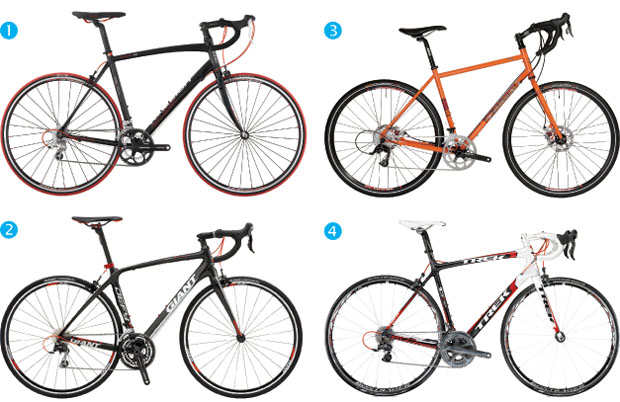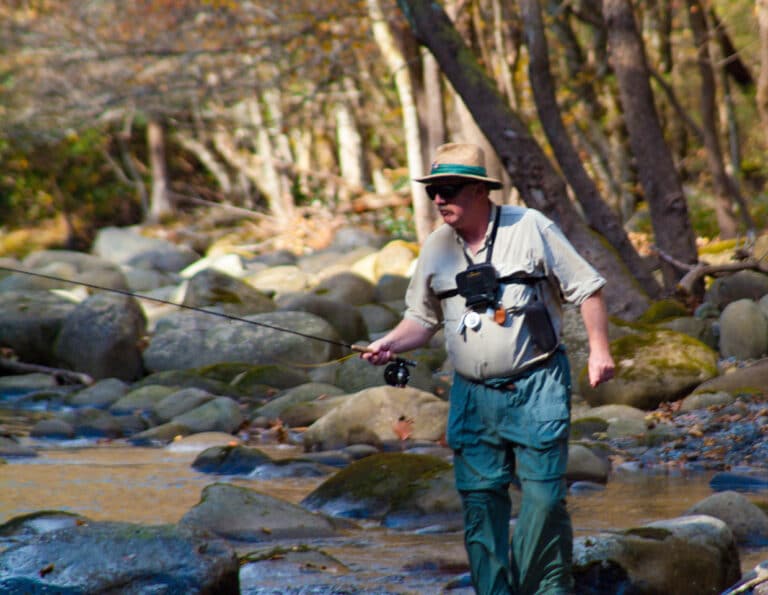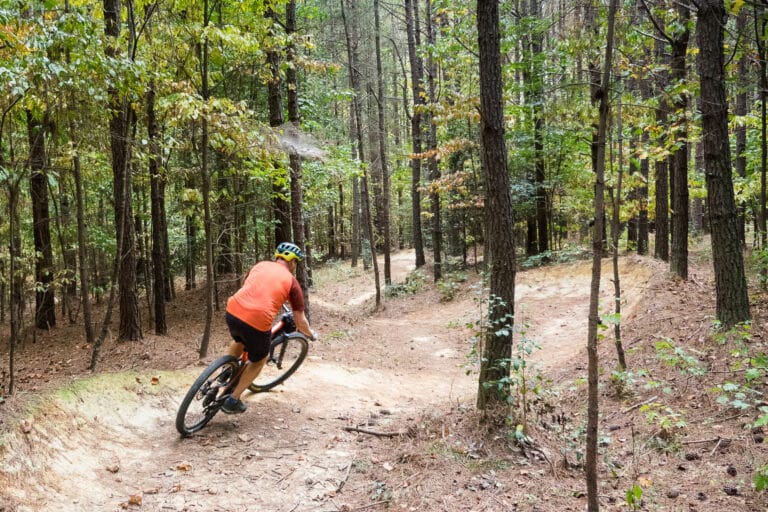1. Raleigh Revenio 2.0 The Revenio is a solid-performing road bike, which is exactly what you need from your first foray into road racing. The geometry of the aluminum frame is race oriented, but more upright to keep you comfortable on longer rides. With the 2.0 you get a carbon composite fork and Shimano Sora components. $799 | raleighusa.com
![]()
2. Giant Defy Advanced 3 Budget minded carbon bikes? Yes, they do exist. Giant’s range of Defy Advanced bikes blend lightweight carbon composite frames with decent components for a race-ready package at a relatively affordable price. The Defy Advanced 3 has the option of a triple chain ring for big climbs, Shimano 105 components, and a longer wheelbase and taller head tube for added comfort on extended rides. $1,930 | giant-bicycles.com
3. Salsa Vaya This utility road bike has a durable chromoly frame, braze-ons for fenders and racks, 700c wheels and cyclocross tires, and a stable geometry with a focus on predictability. The package makes the Vaya a go-to road warrior regardless of the terrain—paved roads, rail trails, gravel roads. $1,649 | salsacycles.com
4. Trek Madone 6 The Madone 6, part of Trek’s flagship racing series, solidifies its reputation as a dream bike. The frame is built from a brand new defense-grade carbon fiber that can only be used by manufacturers in NATO Alliance countries. The new material cuts 100 grams from the frame weight while increasing the overall stiffness. The Madone 6 also offers a customizable program that allows you to choose your paint color, geometry, components, and add ons. Pricing starts at $4,299 | trekbikes.com
Crash Test Dummies
 All bicycle helmets sold in the U.S. have to be approved by the Consumer Product Safety Commission, whether they run $10 and have pictures of kitties on the side, or $300 and are more aerodynamic than a jet. In fact, that cheap helmet is just as safe as the pricier version. According to the Bicycle Helmet Safety Institute, the impact results of cheap helmets and expensive helmets are identical. “When you pay more for a helmet, you may get an easier fit, more vents, and snazzier graphics,” says Randy Swart, director of the Bicycle Helmet Safety Institute. “But the basic impact protection of the cheap helmets tested equal to the expensive ones.”
All bicycle helmets sold in the U.S. have to be approved by the Consumer Product Safety Commission, whether they run $10 and have pictures of kitties on the side, or $300 and are more aerodynamic than a jet. In fact, that cheap helmet is just as safe as the pricier version. According to the Bicycle Helmet Safety Institute, the impact results of cheap helmets and expensive helmets are identical. “When you pay more for a helmet, you may get an easier fit, more vents, and snazzier graphics,” says Randy Swart, director of the Bicycle Helmet Safety Institute. “But the basic impact protection of the cheap helmets tested equal to the expensive ones.”
So why buy the expensive lid? For superior performance. The ProLight is Giro’s top-of-the-line road bike helmet. It’s their lightest, just 200 grams for a medium, with 25 vents for maximum breathability on the hottest of days. To save weight, Giro created a minimalist strap system with thin webbing that stretches around your head. Precisely measure your head size before ordering this lid. Fit is key, since you don’t want the helmet to ride too high on your forehead, leaving too much of your precious dome unprotected.
The shell is fused to the impact-absorbing EPS liner, making the plastic a structural part of the helmet (most plastic shells are laminated to the foam). This “InMold” process allows Giro to make lighter helmets without sacrificing safety, albeit at a higher price. $200 | giro.com
How much impact can that helmet take? Watch this BRO video and find out.








